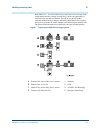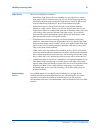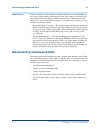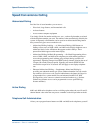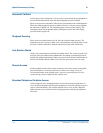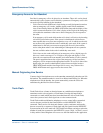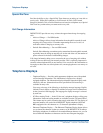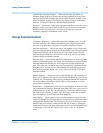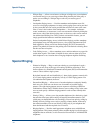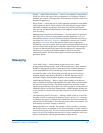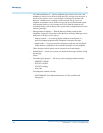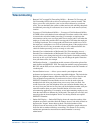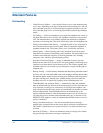
Group Communication
121
Overview for Avaya IP600 Internet Protocol Communications Server
555-233-001 — Issue 5 — November 2000
B
• Administrable Language Displays — Allows the messages that appear on
telephone display units to be shown in the language spoken by the user. These
messages are available in English (the default), French, Italian, Spanish, or one
other user-defined language. The language for display messages is selected by
each user. The feature requires 40-character display telephones.
• Directory — Allows users with display-equipped telephones to access the system
database, use the touch-tone buttons to enter a name, and retrieve an extension
number from the system directory. The directory contains the names and
extensions assigned to all telephones on the system.
Group Communication
• Conference (Telephone) — Allows multi-appearance telephone users to set up
six-party conference calls without attendant assistance. Single-line telephone
users can set up three-party conference calls without attendant assistance.
• Intercom (Automatic) — Allows two users to talk together easily. Calling users
press the Automatic Intercom button and lift the handset. The called user receives
a unique intercom ring and the intercom lamp, if provided, flashes. With this
feature, users who frequently call each other can do so by pressing one button
instead of dialing an extension number.
• Intercom (Dial) — Allows multi-appearance telephone users to easily call others
within an administered group. The calling user lifts the handset, presses the Dial
Intercom button, and dials the one- or two-digit code assigned to the desired
party. The called user’s telephone rings, and intercom lamp, if provided, flashes.
With this feature, a group of users who frequently call each other can do so by
pressing one button and dialing a one- or two- digit code instead of dialing an
extension number.
• Manual Signaling — Allows one user to signal another user. The receiving user
hears a two-second ring. The signal is sent each time the button is pressed by the
signaling user. The meaning of the signal is prearranged between the sender and
the receiver. Manual Signaling is denied if the receiving telephone is already
ringing from an incoming call.
• Group Listen — Simultaneously activates your speakerphone in listen only mode
and your handset or headset in listen and speak mode. This allows you to serve as
spokesperson for a group. You can participate in a conversation while everyone
else in the room is listening to what is said. This feature works only on certain
types of telephones. It is not supported on IP hardphones.
• Group Paging — Allows a user to make an announcement to a group of people
via their speakerphones. The speakerphones are automatically turned on when the
user begins the announcement. The recipients can listen to the message via the
handset if they wish, but they cannot speak to the user in return. A group page
member will not receive the page if the member is active on a call appearance, has
a call ringing, is off-hook, has “send-all calls” active, or has “do not disturb”
active.



